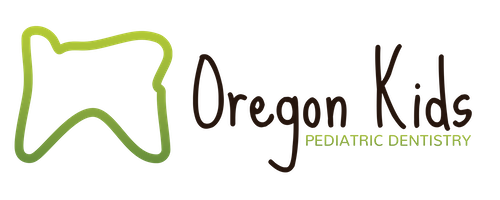Healthy Kids: When Should My Child See The Dentist?
Childhood tooth decay is the most common chronic childhood disease—more common than asthma, diabetes and obesity. “About 30-40% K of children, by the time they reach kindergarten, have cavities,” says Dr. Jordan Lentfer, pediatric dentist at Oregon Kids Pediatric Dentistry.
Even if you can’t see them in your baby yet, those tiny teeth are there—hiding just beneath the gums. For newborns and infants, wipe the gums twice a day with a soft, clean cloth after the first feeding in the morning and right before bed. This helps rid your baby’s mouth of bacteria and sugars that can cause cavities.
Beginning Regular Dental Care
Children should see a dentist and begin routine brushing twice a day, as soon as their first tooth appears, says Dr. Lentfer. “We need to get kids used to the habit of brushing their teeth, so introducing it when that first tooth comes in is huge.”
The American Academy of Pediatric Dentistry (AAPD) recommends using a fluoride toothpaste. Fluoride is a naturally occurring mineral that is found in many foods. It can strengthen tooth enamel, making it more resistant to acid that can cause tooth decay. Some cities and town, like Eugene and Springfield, do not add fluoride to the drinking water supply, so in addition to using a fluoride toothpaste, ask your pediatrician or dentist how best to provide a fluoride supplement for your child.
Fluoride-free substitutes are also available, including Xylitol, which is a natural sweetener derived from fibrous, woody plants. Xylitol can starve the harmful bacteria in your mouth, reducing plaque buildup and tooth decay. Many dentists recommend using xylitol-sweetened chewing gum to prevent bacteria build-up between brushings.
How much toothpaste is safe and appropriate for my child?
- Children younger than age 3 should use just a tiny amount of toothpaste—the size of a grain of rice.
- For children 3 to 6 years old, use no more than a pea-sized dollop of toothpaste.
“If your child is 6 years and above and they’re able to spit out the toothpaste, you can use a regular amount,” says Dr. Lentfer.
The direction of the brushing—up and down, back and forth, or around in circles—really doesn’t matter. What’s important is to clean each tooth thoroughly, top and bottom, front and back. A child cannot properly brush his or her teeth without help until about 6 to 8 years old, so be sure to supervise or perform the actual brushing, if necessary.
It may take time to get your toddler or preschooler to become comfortable with having his or her teeth brushed. Be patient and try these tips.
Focus on healthy foods
Since cavities in children can grow at a rate three times faster than in an adult, Dr. Lentfer says it’s important to be mindful of what your children are eating. Limit foods high in processed carbohydrates and sugar, including juice and sodas, and foods and liquids in those convenient squeezy pouches.
“Those pouches can be killer on teeth because they are high in carbohydrates which turn to sugar in the mouth,” she says. “Encourage your child to drink anything that is not water in one sitting. Don’t sip on it, go play, sip on it, go play, because then it’s just constantly bathing the teeth with sugar.”
Also be careful with sticky foods, including dried fruits, such as raisins, since they easily stick to the grooves of the teeth and can cause cavities if not thoroughly brushed off.
When should my child begin flossing?
Much like brushing, flossing at a young age is an important factor in keeping your child’s teeth healthy and keeping your kids free from unnecessary dental pain associated with plaque and cavities.
It’s recommended that parents introduce flossing as part of their child’s bedtime routine as soon as he or she has two teeth that are touching. It may take some getting used to, but flossing is key to removing bacteria that causes cavities.
If you’re struggling to reach the smaller areas in your child’s mouth with traditional dental floss, try floss picks. This will make it much easier to reach between your child’s teeth effectively; they are also much easier for children to use on their own. Floss picks come in different shapes and colors that may make your child more excited about nightly flossing.
Establishing a “dental home”
Both the AAPD and the American Academy of Pediatrics recommend that all children see a pediatric dentist and establish a “dental home” by age 1. Seeing a dentist twice a year for a checkup is an important part of a child’s overall medical health, says pediatrician Dr. Pilar Bradshaw with Eugene Pediatric Associates.
“Having untreated, painful cavities can alter a kid’s ability to eat. And, sometimes, it’s a cause of discomfort that can disturb their sleep or disturb their development,” she says. “Pediatricians and pediatric dentists work together with families because they really want to help parents take good care of their kids’ teeth.”
Unlike a general dentist, a pediatric dentist has 2-3 additional years of training, specializing in young children and adolescents. A pediatric dentist will ensure that all teeth are developing normally, that there are no dental problems, and will also give you further advice on proper hygiene.
“Just like you go to your pediatrician for regular checkups, it should be the same thing with teeth,” says Dr. Lentfer. “We want to make sure your child’s tooth enamel is healthy. Funky lumps and bumps can always pop up in the first couple of years, and we want to make sure that doesn’t happen. Cavities can be prevented, so starting a child off on the right foot and giving parents the tools they need is really important.”
